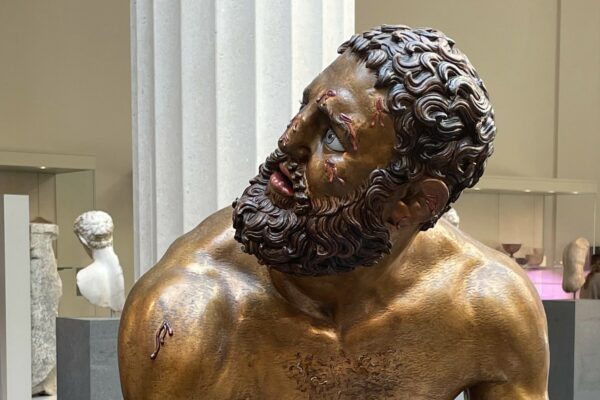All CLAS courses cross-listed with HER can be applied to the Art History Minor, as well as the Classical Studies Minor.
CLAS-A 301 Classical Archaeology
- combined with HER-H 310
The past is a puzzle with no instructions and mostly missing pieces. Come find out how archaeologists put together what pieces we do have to reconstruct the cultures of Ancient Greece and Rome. Learn how to draw connections using a variety of evidence, including excavation, coins, and sculpture. Explore numerous issues for the study of ancient and modern societies, such as environmental practices and the expression of personal identity. Most importantly, learn to think critically about how societies work, change, and interact over time.
CLAS-C 414 The Art and Archaeology of the Roman World
- combined with HER-H 414
Come explore the material culture of Ancient Rome, a world of gladiators, gods, and generals, emperors, priests, and the enslaved. Learn how the Roman army conquered an empire that stretched from Scotland to Syria, Romania to Morocco. Delve into architectural and artistic achievements that would not be matched for millennia. Evaluate how archaeologists draw their conclusions from artifacts. Most importantly, look into the material remains of the past to see how we are still connected to the Romans today.
CLAS-A 418 Myth and Reality in Classical Art
- combined with HER-H 418
This course presents an introduction to Classical iconography (the study of images) that explores approaches to narration and representation in Ancient Greece and Rome. Examine the illustration of myth, history, and everyday life in Classical art in relation to ancient society. Why and how did ancient societies represent stories in art? What can pottery and sculpture tell us about the role of storytelling in ancient life? How did visual art serve as a means of powerful communication across cultures and centuries?
CLAS-C 419 Art and Archaeology of Pompeii
- combined with HER-H 419
Take a survey of the archaeological evidence of the best-preserved ancient city, buried under the ashes of Mt. Vesuvius in AD 79. Learn about everyday life in a Roman seaside town. Explore topics including urban development, gladiators, theater, the lives of women and the enslaved, commerce, religion, art history, and more, with special attention to the ethics of preserving disaster sites.


